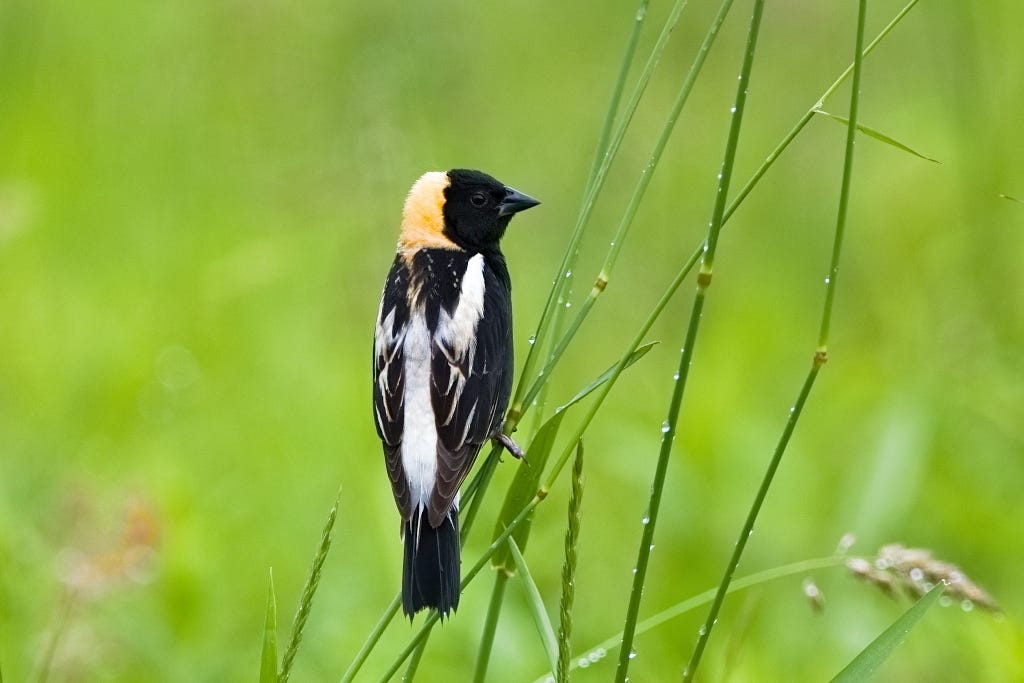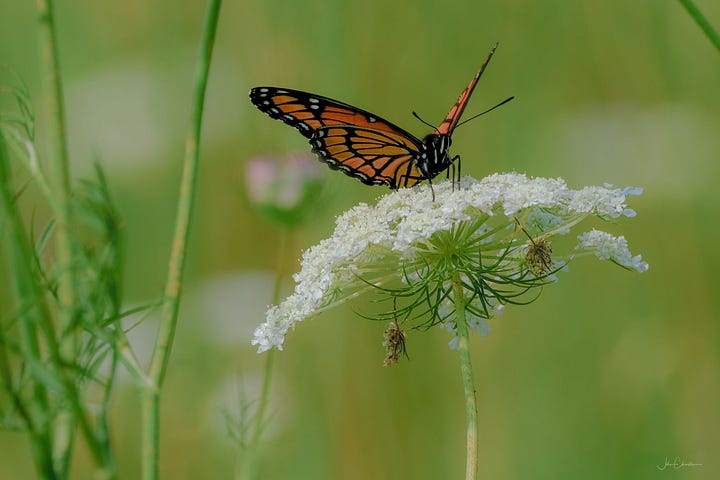Lone Pine Marsh
Northumberland Land Trust invites public to Arts Day at the Lone Pine Marsh Braham Nature Reserve in Cramahe Township, Northumberland County, ON.
The occasion was a public invitation to visit the local wetland and to spend some time getting to know it and the land trust with the help of local naturalist Doug McCrae. The invite said to bring your camera or paints or whatever you wanted and to enjoy their sheltered picnic area overlooking the marsh in the company of others.
I was only vaguely familiar with the Land Trust but knew Doug from our days back in the 90s at the Brighton Independent, where he wrote a naturalist column and I sold advertising. I often picked his brain about various topics when he visited the office at the same time I was there. I knew he would make the day interesting and I had never been to this specific location which is only about 20 minutes away by car.
I reasoned it would be a good opportunity to try out my relatively new Fujinon 150-600 lens and of course it would be nice to catch up with Doug after so long. Here’s the description of the property from the land trust’s website:
“This 138 acre nature reserve protects a provincially significant wetland, as well as the diverse habitats of creek, forest, and meadow. A large viewing deck overlooks the marsh, and walking trails lead through adjacent fields where Bobolink and Eastern Meadowlark can be found nesting in summer. There is a sheltered picnic area by the parking lot, and this property is open to the public all year. Murial Braham’s wish to preserve this beautiful marsh led her to purchase the property and establish the Lone Pine Land Trust, which has now merged with Northumberland Land Trust”
Land trusts are a growing phenomenon. They provide a legal way for owners of significant natural properties to preserve these natural habitats against various forms of development. Turns out Doug is now their acquisitions manager and he says they are now growing at an incredible rate.
After giving a talk to the group about Murial Braham’s vision for the property, we followed him down a path to the marsh and a viewing platform which makes it easy to look out over the wetlands.
The view at the top of this page is from the lookout as are the Great Egret images which follow. A second lookout overlooking a beaver dam is currently in the planning stages. After taking us to dam which is largely hidden from view this time of year, I split off from the group and followed one of the paths around a large meadow which has successfully seen the reintroduction of Bobolinks to the area. Bobolinks are increasingly under pressure due to habitat loss and modern haying practices. To encourage the species, trees around the perimeter of the field were cut down as tall trees near an open field seem to discourage them. While I did not see any on this day, I found a wonderful image of a Boblink by Peter Swaine on Flickr.

What I did see in abundance were Monarch butterflies. I found them flitting about the Queen Anne’s Lace, a common plant in this large field which slopes westward up from the marsh. Monarchs and Queen Annes Lace. Seems like a good fit.
Here are some more images I grabbed on my first walk around the meadow.




Returning to the marsh lookout, I spotted a Great Egret fishing in the shallows. Not quite as large as the Great Blue Heron, but equally majestic, I watched as it would walk a bit, stare intently into the water, lower its neck and then splash down quickly to grab a small fish. It did this over and over again with great precision. I was fortunate to catch a photo of one of these little fishies as it was swallowed whole. Down the hatch!
Every once in a while the white heron would spread its wings and fly 20 or 30 feet to another fishing spot. It never took long for it to find its next prey. Doug said they come up from Presqu’ile Provincial Park, which is not far away along the shores of Lake Ontario.
Standing atop the lookout, it easy to see how active the swamp is. Bubbles rise from down under, released by unseen forces.
Returning to the shelter where the others were already gathered, some with paints and easels, I spotted one last creature, a dragonfly, and stopped to take home another souvenir of my visit. This, a Blue Skimmer which is common near marshes like this.
I’m bound to return to this natural paradise and will give more thought to the concept of land trusts. I wonder how my own property would be viewed by them.
It was interesting to meet and talk with other photographers and artists gathered at the nature reserve. Amongst the photographers, talk quickly turned to equipment as it often does. But really, our common bond is a love of nature.
I even met some fellow Substackers such as photographer Andy Moeck and his partner, former introvert Michelle Snarr, both of whom are dipping their toes into the practice of substack writing.
I’ll leave you with the sweet sounds of Egret by Dead Nettle, released March 2024.
















Beautiful images of the monarchs and egrets - I write as a nature lover from rural and beautiful Northumberland UK. Did you know that your name Charlton originates from this region Northumberland? The Charltons were among the notorious Northumberland reiver families and there are still numerous Charltons in the region today. Looking forward to more of your posts.
Looks like a great place! Very nice narrative and images. Love the monarchs and the land trust concept is working well here in Michigan, to your west. Great work!